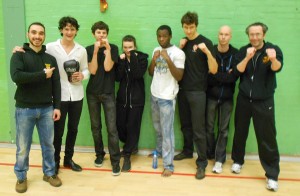
CUKBS Varsity Team 2013
Yesterday we had a very exciting day when the Cambridge University Kickboxing Society (CUKBS) won, once more, the Varsity Kickboxing tournament against Oxford University Kickboxing.
After a smooth and relaxing trip to Oxford and a quick warm up we found ourselves with a bad start as two of our fighters were considerably over their stated weight and requested to forfeit by the organisers 🙁 We managed to compromise and get to an agreement by shuffling around a couple of our athletes to accommodate their requests. So we started with one loss without even throwing a single punch that is less than ideal for morale and motivation.
The show started with two a demo fights; one between two Oxford University Kickboxing girls and one with our Maeve Doherty which resulted in a draw and did not contributed to the result.
The two opening fights were however a boost for morale for us all as they saw Tim Williamson, after a shy start, quickly developing a winning strategy based on many front kicks and good combinations of punching securing the first victory.
Charlie Samson also managed to impose his strategy based on long leading hook punches and nice kicks, winning the second point for Cambridge.
Phil Richardson, fighting an opponent 9 Kg heavier, as part of the rearrangement previously mentioned, managed to put together some nice combinations of punches but was simply outscored by an opponent whose strategy relied heavily on his weight advantage.
Kostas Ziovas, at his first external fight, managed to have a fairly balanced fight where his opponent had a reach and height advantage but Kostas compensated with footwork and good guard; at the end of the fight it was difficult to say who the winner was and the judges were of the same opinion, concluding this match with a draw result.
Konstantin Semeniuk, the most experienced fighter in the CUKBS team, took part in this Varsity match following a long period of absence from training due to illness and his performance were not as brilliant as we saw him in the past. He began fairly slowly allowing his opponent to score a few times but then he increased the pace, started to impose his unique strategy based on fast double kicks with the same leg and scoring many times securing the third point for CUKBS.
Ollie Osunkunle, current vice-president of CUKBS, was in great shape and well prepared for the fight but a slightly taller opponent with an unusual style managed to score more points to Ollie than he managed to score back. Ollie had a great control of the ring and offered a show that was very pleasant to watch but did not secure a victory.
Draws are no fun; both teams agreed on that. After a long debated last minute decision we agreed for a rematch for Charlie against his original fighter, 5 Kg lighter than him. Charlie previously fought over an hours before, all the adrenaline was gone and felt visibly tired; it took him lots of courage to step back into the ring for a deciding match but it was worth the effort. Following an initial setback where Charlie got a couple strong punches that momentarily put him on the floor (and an official warning was issued for his opponent) he started to reapply his strategy based on long leading punches and kicks while putting maximum effort and concentration in holding a tight guard. Charlie managed to brilliantly win the final match and achieve the victory for the whole team.
It was great to receive, one fight after the other, compliments from both referee and judges about good style and consisted level of control demonstrated by all CUKBS fighters.
Yesterday we saw a great team work that brought the 3rd consecutive Varsity Kickboxing victory for CUKBS. Congratulations to Maeve, Tim, Charlie, Phil, Kostas, Konstantin and Ollie that together contributed to this victory. A great thank you to all members of CUKBS, ARUKBC and CARISMA which helped with training and preparation for these fighters as training sessions over the last few weeks were really much geared around this very event. A super special thanks goes also to Duncan, Georgios, Heley, James and Jarek which all helped and contributed, with their expertise and efforts, to train and prepare these fighters. Videos of the fights will follow in due course.
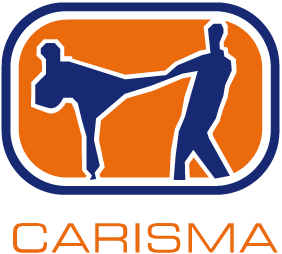

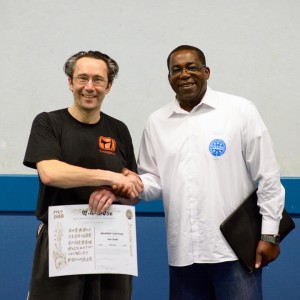
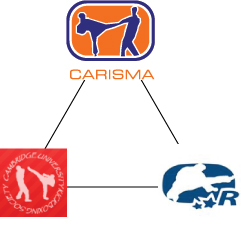
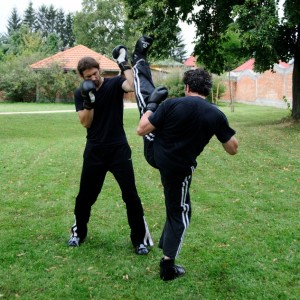
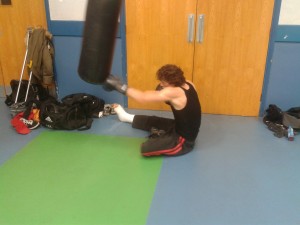 There is quite common saying, in traditional martial arts schools, when you hurt one of your hands or feet: “you have another hand and two feet, you can still fight!”
There is quite common saying, in traditional martial arts schools, when you hurt one of your hands or feet: “you have another hand and two feet, you can still fight!”